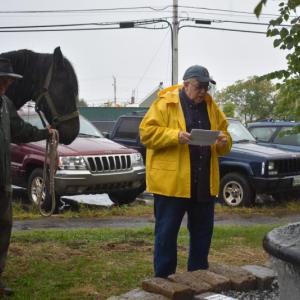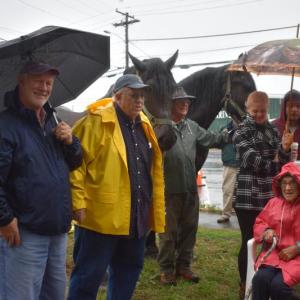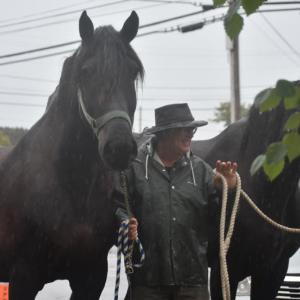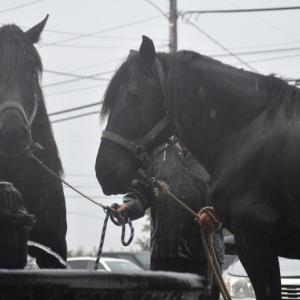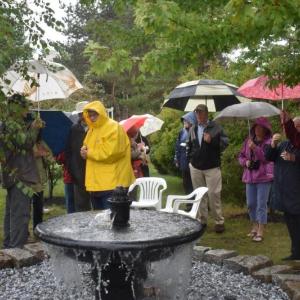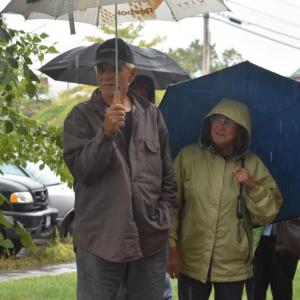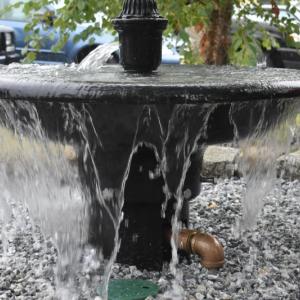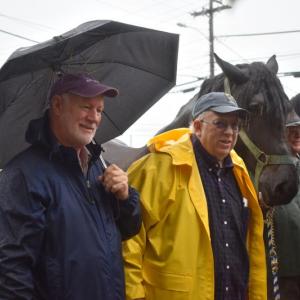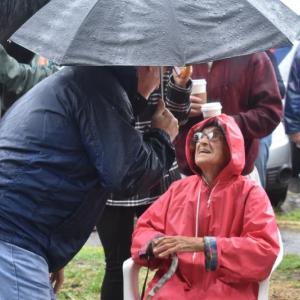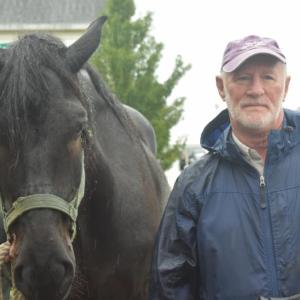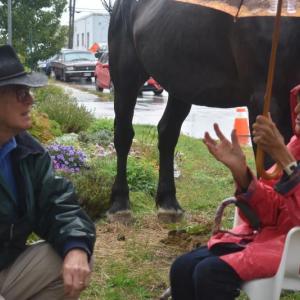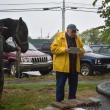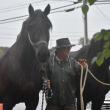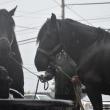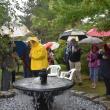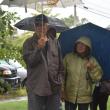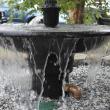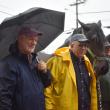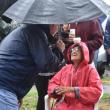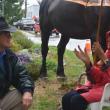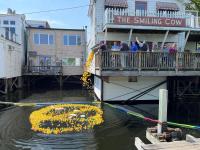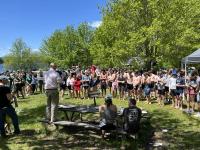Rockland horse fountain re-installation reminder of harder, simpler living
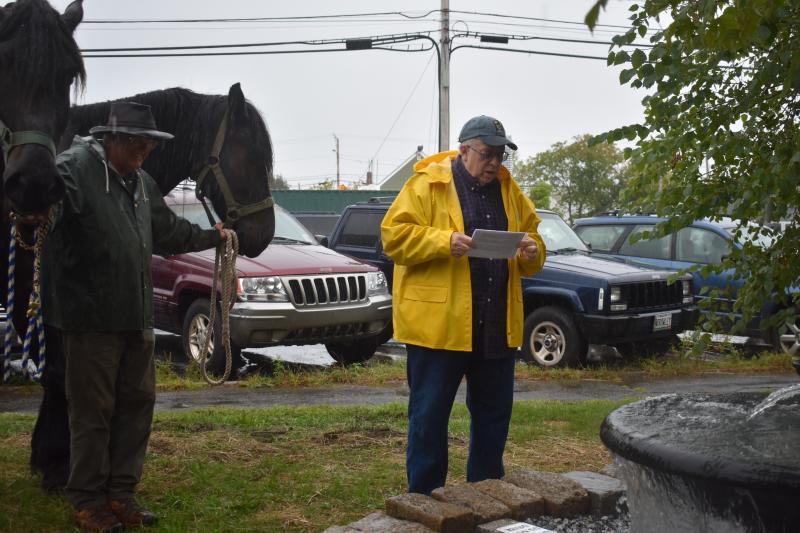 Rockland Historical Society President, Brian Harden, acknowledges the re-installed watering trough on Tillson Avenue, as well as those who made the project possible. (Photo by Sarah Thompson)
Rockland Historical Society President, Brian Harden, acknowledges the re-installed watering trough on Tillson Avenue, as well as those who made the project possible. (Photo by Sarah Thompson)
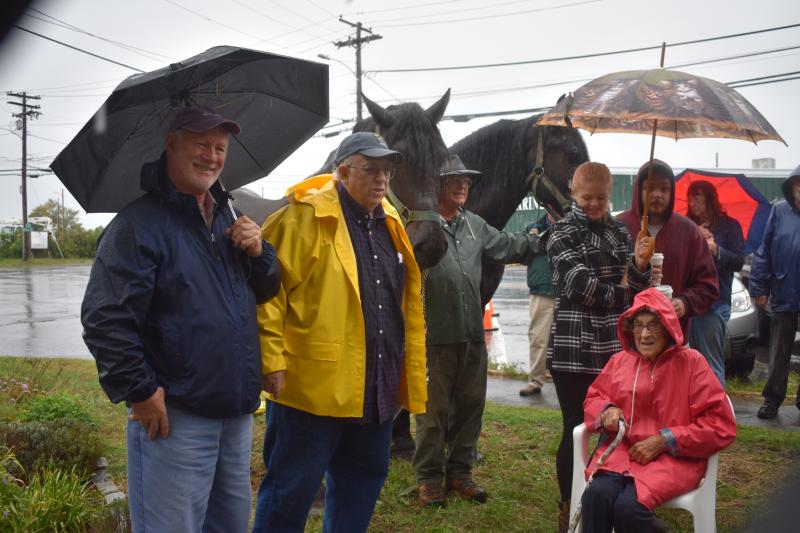 Ervin Robinson, Brian Harden, and Edith Dondis (sitting) converse during the ceremony. (Photo by Sarah Thompson)
Ervin Robinson, Brian Harden, and Edith Dondis (sitting) converse during the ceremony. (Photo by Sarah Thompson)
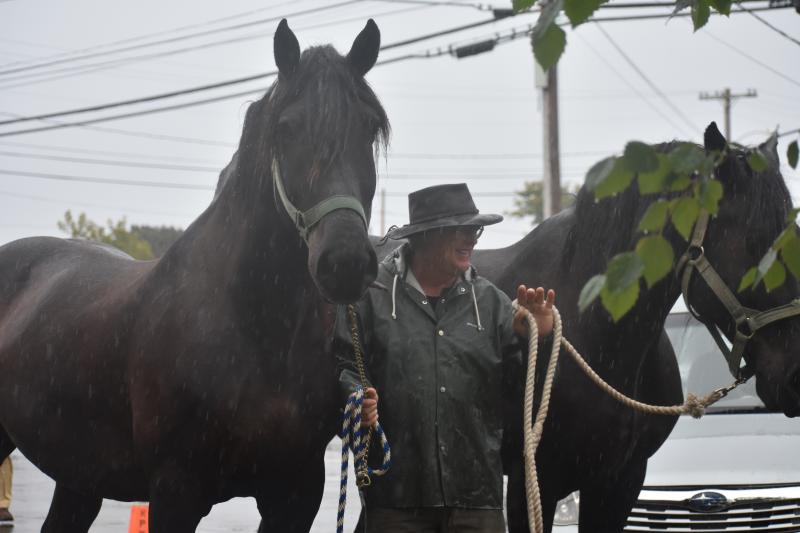 Delbert Ellis and his horses, Jack and Eclipse, from the St. George Carriage Company. (Photo by Sarah Thompson)
Delbert Ellis and his horses, Jack and Eclipse, from the St. George Carriage Company. (Photo by Sarah Thompson)
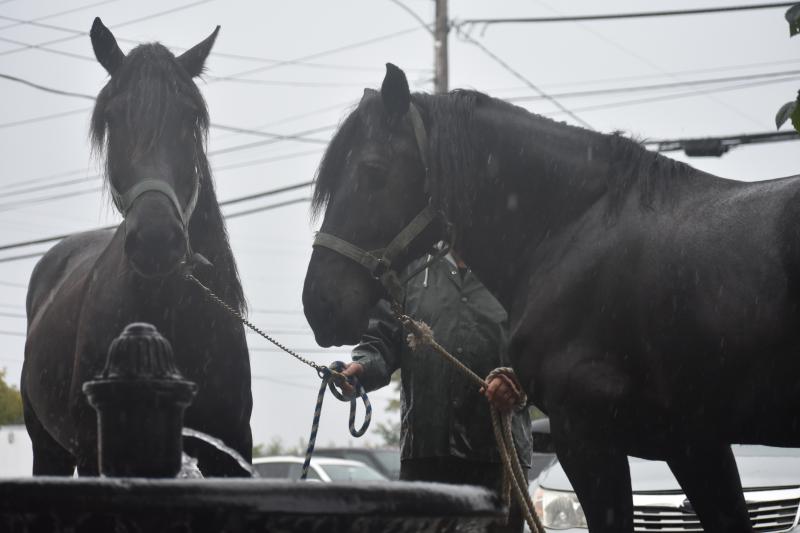 (Photo by Sarah Thompson)
(Photo by Sarah Thompson)
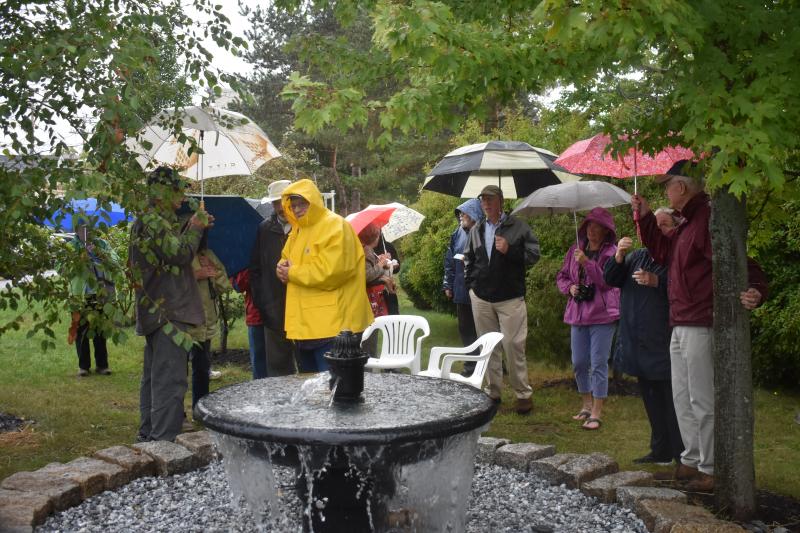 (Photo by Sarah Thompson)
(Photo by Sarah Thompson)
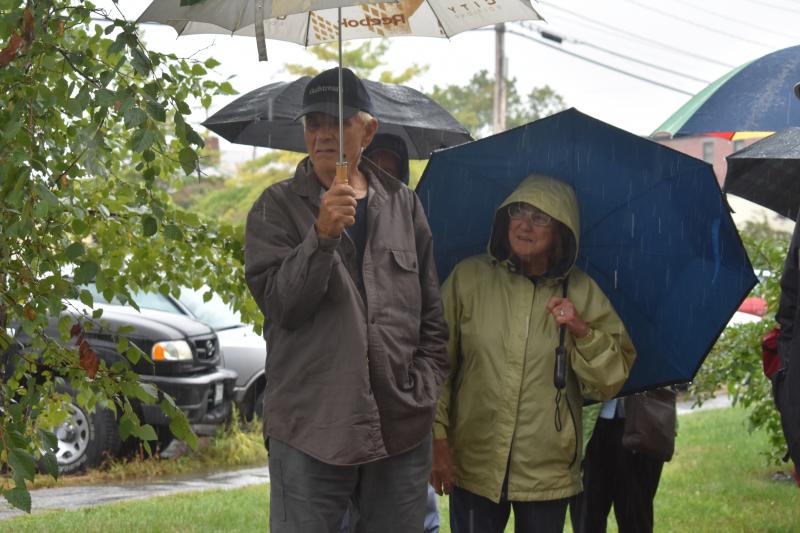 Al and Rosemary Dolbric. (Photo by Sarah Thompson)
Al and Rosemary Dolbric. (Photo by Sarah Thompson)
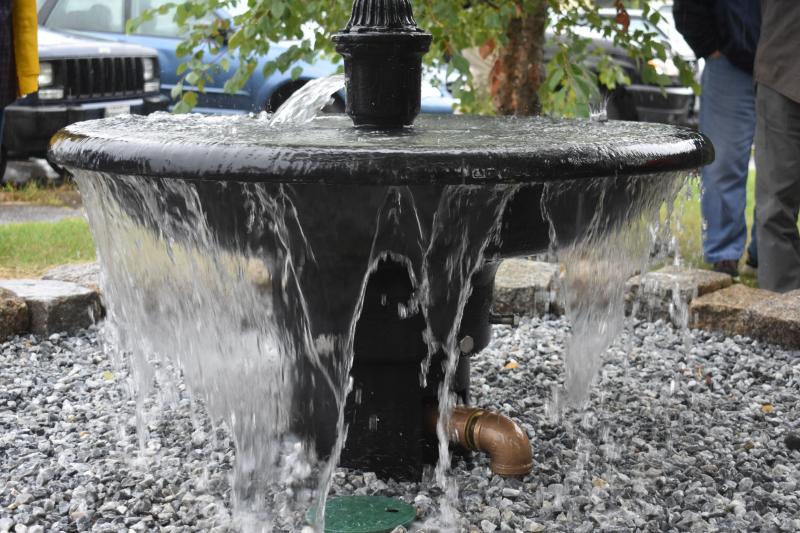 (Photo by Sarah Thompson)
(Photo by Sarah Thompson)
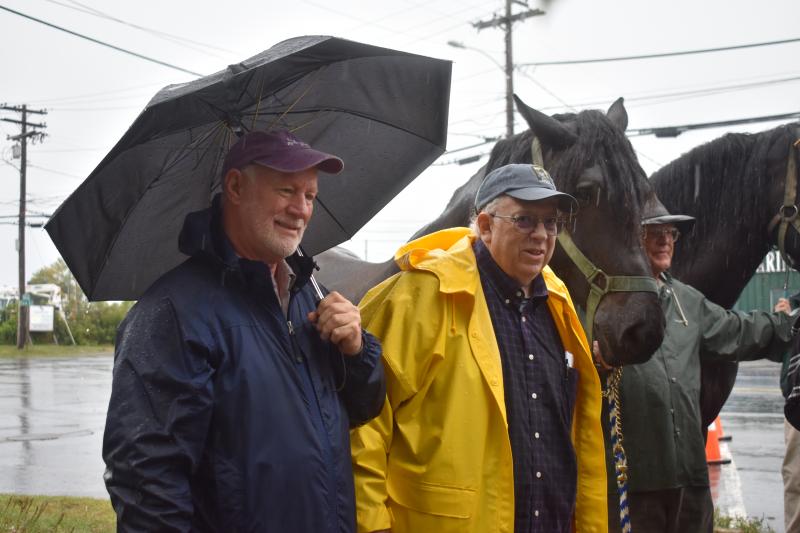 (Photo by Sarah Thompson)
(Photo by Sarah Thompson)
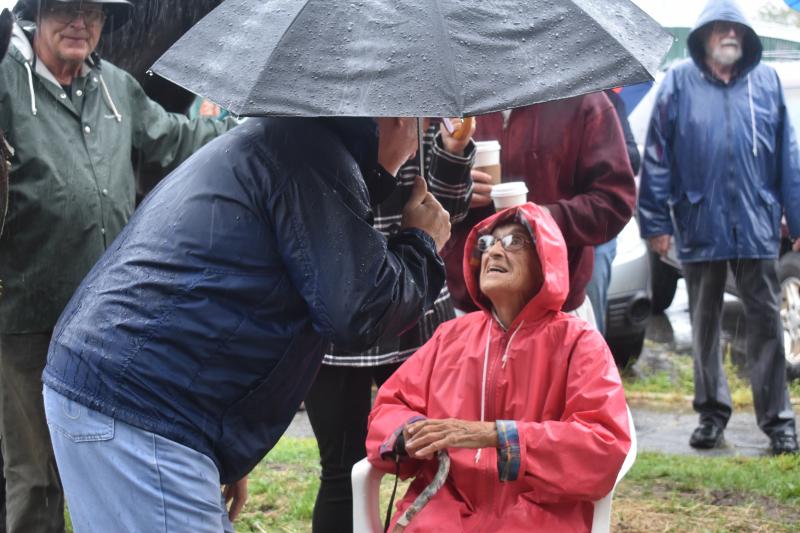 (Photo by Sarah Thompson)
(Photo by Sarah Thompson)
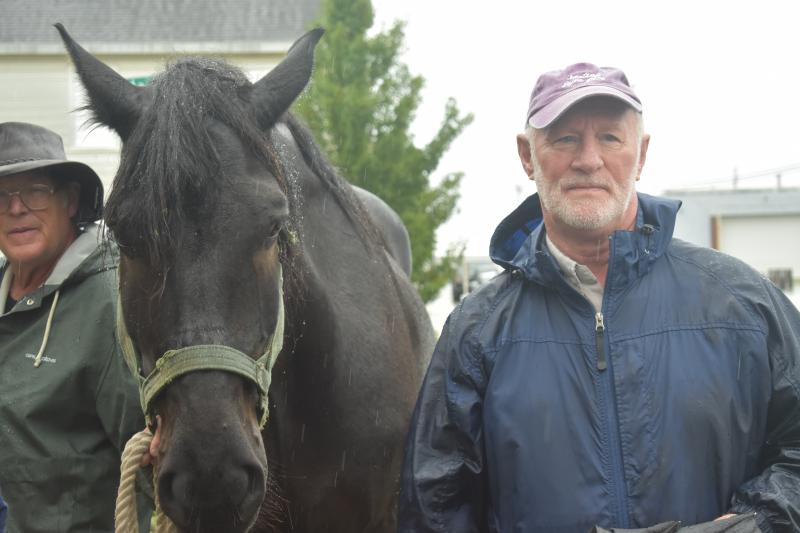 (Photo by Sarah Thompson)
(Photo by Sarah Thompson)
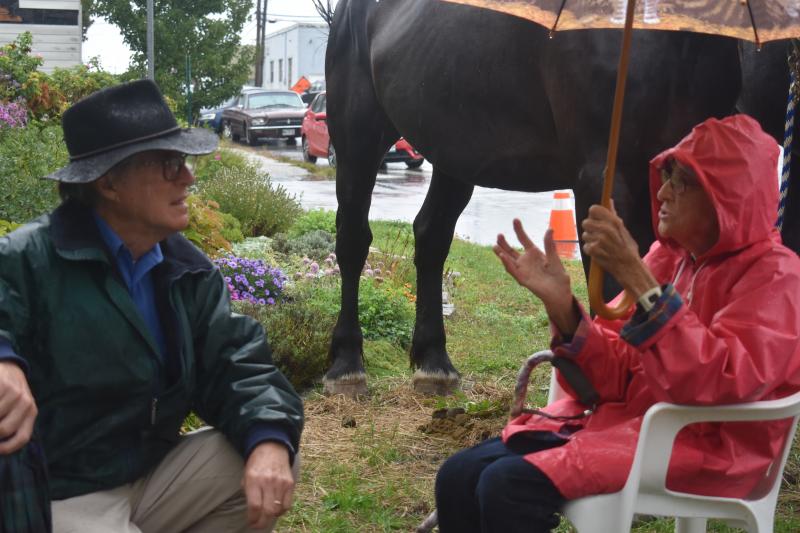 Terry Pinto, director of the Wastewater Treatment Plant, speaks to Edith Dondis, who once played in the fountain. (Photo by Sarah Thompson)
Terry Pinto, director of the Wastewater Treatment Plant, speaks to Edith Dondis, who once played in the fountain. (Photo by Sarah Thompson)
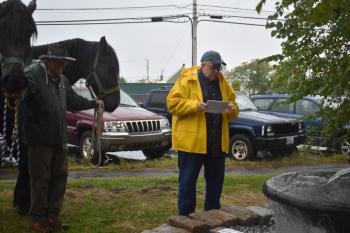 Rockland Historical Society President, Brian Harden, acknowledges the re-installed watering trough on Tillson Avenue, as well as those who made the project possible. (Photo by Sarah Thompson)
Rockland Historical Society President, Brian Harden, acknowledges the re-installed watering trough on Tillson Avenue, as well as those who made the project possible. (Photo by Sarah Thompson)
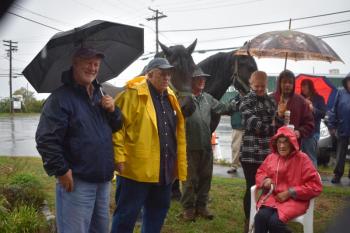 Ervin Robinson, Brian Harden, and Edith Dondis (sitting) converse during the ceremony. (Photo by Sarah Thompson)
Ervin Robinson, Brian Harden, and Edith Dondis (sitting) converse during the ceremony. (Photo by Sarah Thompson)
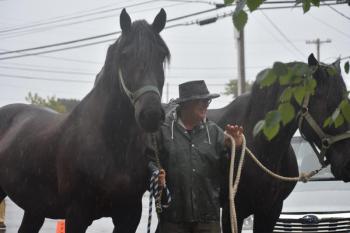 Delbert Ellis and his horses, Jack and Eclipse, from the St. George Carriage Company. (Photo by Sarah Thompson)
Delbert Ellis and his horses, Jack and Eclipse, from the St. George Carriage Company. (Photo by Sarah Thompson)
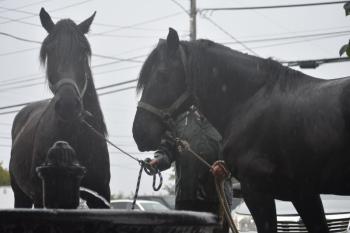 (Photo by Sarah Thompson)
(Photo by Sarah Thompson)
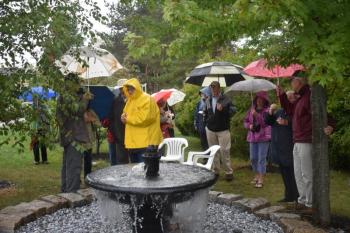 (Photo by Sarah Thompson)
(Photo by Sarah Thompson)
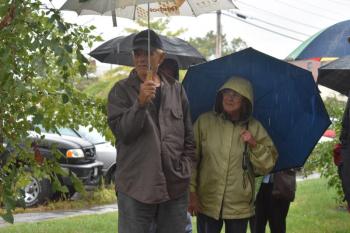 Al and Rosemary Dolbric. (Photo by Sarah Thompson)
Al and Rosemary Dolbric. (Photo by Sarah Thompson)
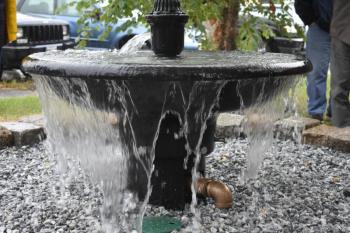 (Photo by Sarah Thompson)
(Photo by Sarah Thompson)
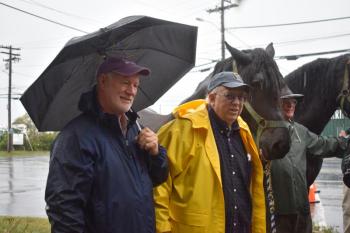 (Photo by Sarah Thompson)
(Photo by Sarah Thompson)
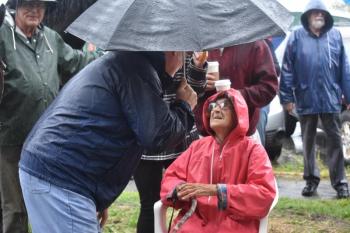 (Photo by Sarah Thompson)
(Photo by Sarah Thompson)
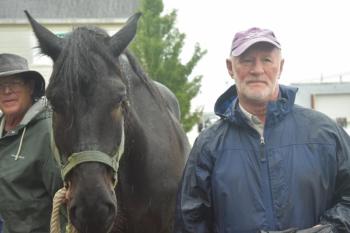 (Photo by Sarah Thompson)
(Photo by Sarah Thompson)
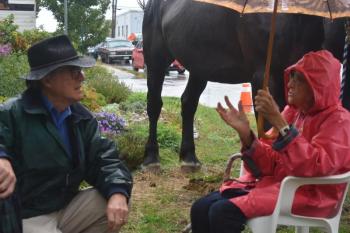 Terry Pinto, director of the Wastewater Treatment Plant, speaks to Edith Dondis, who once played in the fountain. (Photo by Sarah Thompson)
Terry Pinto, director of the Wastewater Treatment Plant, speaks to Edith Dondis, who once played in the fountain. (Photo by Sarah Thompson)
ROCKLAND – Just as water rained from the top of a re-installed watering trough on Tillson avenue, Tuesday, Sept. 18, so, too, did the rain pour from the sky.
But a small crowd stood undeterred during the 11 a.m. dedication ceremony for the only existing horse fountain known to Rockland, which has been re-installed near the last site of operation of any fountain of its kind.
During its prime, the trough (otherwise known as the horse fountain) not only provided a water source for the thirsty, working equines of the late 1800s and early 1900s, it connected neighbors and townspeople.
Water flows again from the fountain thanks to Frank O’Hara, who restored the basin at his Journey’s End Marina Shipyard; Terry Pinto, director of the Wastewater Treatment Plant, who took on the project; John Dutcher, who installed the fountain; and Al and Rosemary Dolbric, who donated the trough back to the City.
“I was going to bring a cup and fill it with water,” Historical Society President Brian Harden said. “But I left it in the car. I figure we’ve got enough water already.”
In fact, the fountain that once quaffed the throats of people as well as animals, is no longer for human consumption. The water is recycled, circling repeatedly.
The fountain is also shorter than the original, one of four donated by William Farnsworth, president of the Rockland Water Company, 1871.
The perimeter bricks came from the cobblestones of old Tillson (formerly Sea Street), which were later used as a wall where the sidewalk now exists. That wall kept the tides of Lermond Cove at bay, yet also scared the mothers who caught glimpses of their children walking along the masonry’s top.
The wall was about four feet on the road side, and 50 feet on the cove side, according to Ervin Robinson, composer of the Rockland song, and, during the ceremony, represented the youngest living resident of Tillson’s residential era.
Robinson then started to laugh.
“I can hear her now,” he said. “My mother, hollering across the street. Get off the wall!”
Tillson Avenue became home to a large number of immigrants, according to 97-year-old Edith Dondis, the oldest living representative at the ceremony, as well as former classmate of Robinson’s mother. The Polish, the Jewish, the Italians all came. Dondis’ mother emigrated to the area with a tongue for three languages, according to her. None of those words were English.
Historical Society Curator Ann Morris estimated 80 houses based on an old map of the neighborhood, and Robinson estimated 300 children.
Robinson lived in a house near what is now Hamilton Marine. See that telephone pole? he asked, Tuesday. That’s where he lived, until the neighborhood was torn down and the residents dispersed throughout Rockland. Until he was six, Robinson lived right next to a junkyard of aluminum, which was next door to a poultry farm.
All the immigrants and the poor people came to the Tillson area, according to Robinson.
For Dondis the sight of the fountain jogged memories of 1956, the year the fountain was disconnected from its location in front of the St. Clair & Allen Candy Company at 50 Tillson Avenue. 1956 was a changing point for the area. Several neighborhood children, including Dondis, had gone to war. Some remained permanently overseas. Some, according to Dondis, settled post-war in new places.
Though the other three cast-iron fountains donated by Farnsworth (Limerock, Rankin, and Park streets) were removed in the 1930s when automobiles replaced horses, Tillson’s trough remained for further usage, according to Harden. The residents of ‘The Point’ still needed water from the fountain for their cooking, cleaning, and bathing.
“[Tillson] was poor,” said Robinson. “But good for kids. A lot of adventures.”
Read our previous article:
Reach Sarah Thompson at news@penbaypilot.com
Event Date
Address
United States

